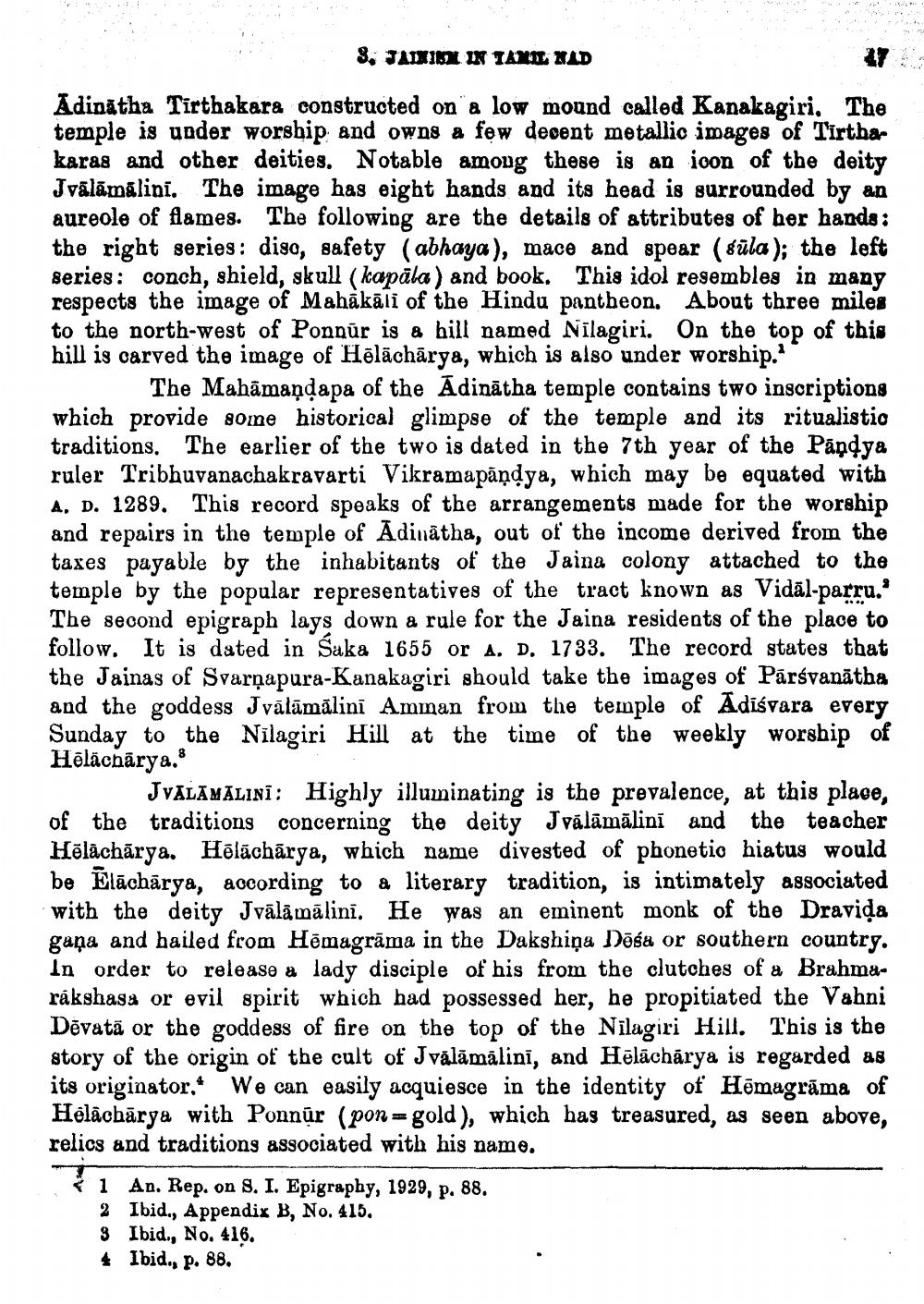________________
3. JAINISM IN TAMIL NAD
Adinatha Tirthakara constructed on a low mound called Kanakagiri. The temple is under worship and owns a few decent metallic images of Tirthakaras and other deities. Notable among these is an icon of the deity Jvālāmālinī. The image has eight hands and its head is surrounded by an aureole of flames. The following are the details of attributes of her hands: the right series: disc, safety (abhaya), mace and spear (sula); the left series: conch, shield, skull (kapāla) and book. This idol resembles in many respects the image of Mahakali of the Hindu pantheon. About three miles to the north-west of Ponnur is a hill named Nilagiri. On the top of this hill is carved the image of Helacharya, which is also under worship.'
The Mahamaṇḍapa of the Adinatha temple contains two inscriptions which provide some historical glimpse of the temple and its ritualistic traditions. The earlier of the two is dated in the 7th year of the Pandya ruler Tribhuvanachakravarti Vikramapaṇḍya, which may be equated with A. D. 1289. This record speaks of the arrangements made for the worship and repairs in the temple of Adinatha, out of the income derived from the taxes payable by the inhabitants of the Jaina colony attached to the temple by the popular representatives of the tract known as Vidal-parru.' The second epigraph lays down a rule for the Jaina residents of the place to follow. It is dated in Saka 1655 or A. D. 1733. The record states that the Jainas of Svarṇapura-Kanakagiri should take the images of Parsvanātha and the goddess Jvālāmālinī Amman from the temple of Adisvara every Sunday to the Nilagiri Hill at the time of the weekly worship of Helächarya.
JVALAMALINI: Highly illuminating is the prevalence, at this place, of the traditions concerning the deity Jvalamālinī and the teacher Helacharya. Helacharya, which name divested of phonetic hiatus would be Elacharya, according to a literary tradition, is intimately associated with the deity Jvalamālinī. He was an eminent monk of the Dravida gana and hailed from Hemagrāma in the Dakshiņa Dēsa or southern country. In order to release a lady disciple of his from the clutches of a Brahmarakshasa or evil spirit which had possessed her, he propitiated the Vahni Devata or the goddess of fire on the top of the Nilagiri Hill. This is the story of the origin of the cult of Jvālāmālinī, and Helacharya is regarded as its originator. We can easily acquiesce in the identity of Hemagrāma of Helacharya with Ponnur (pon- gold), which has treasured, as seen above, relics and traditions associated with his name.
1 An. Rep. on S. I. Epigraphy, 1929, p. 88.
2 Ibid., Appendix B, No. 415.
3 Ibid., No. 416.
4 Ibid., p. 88.




